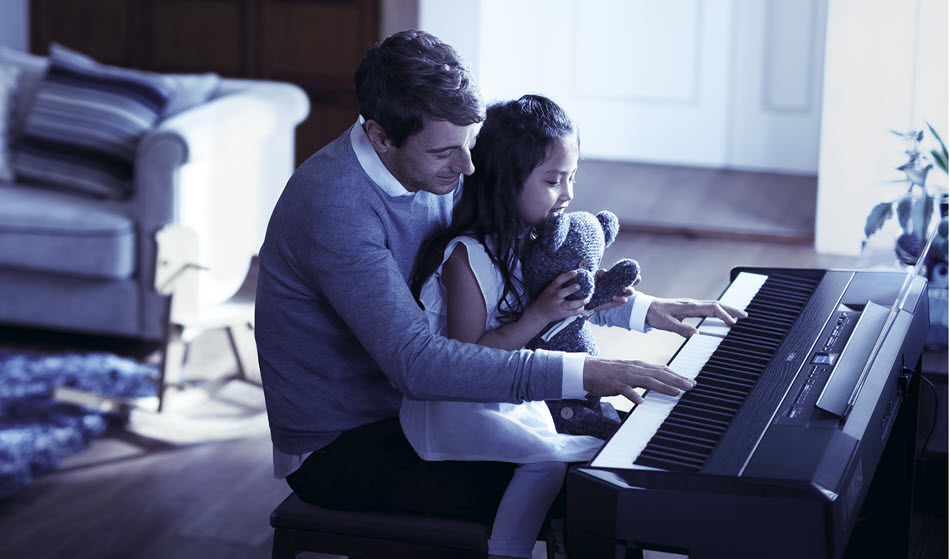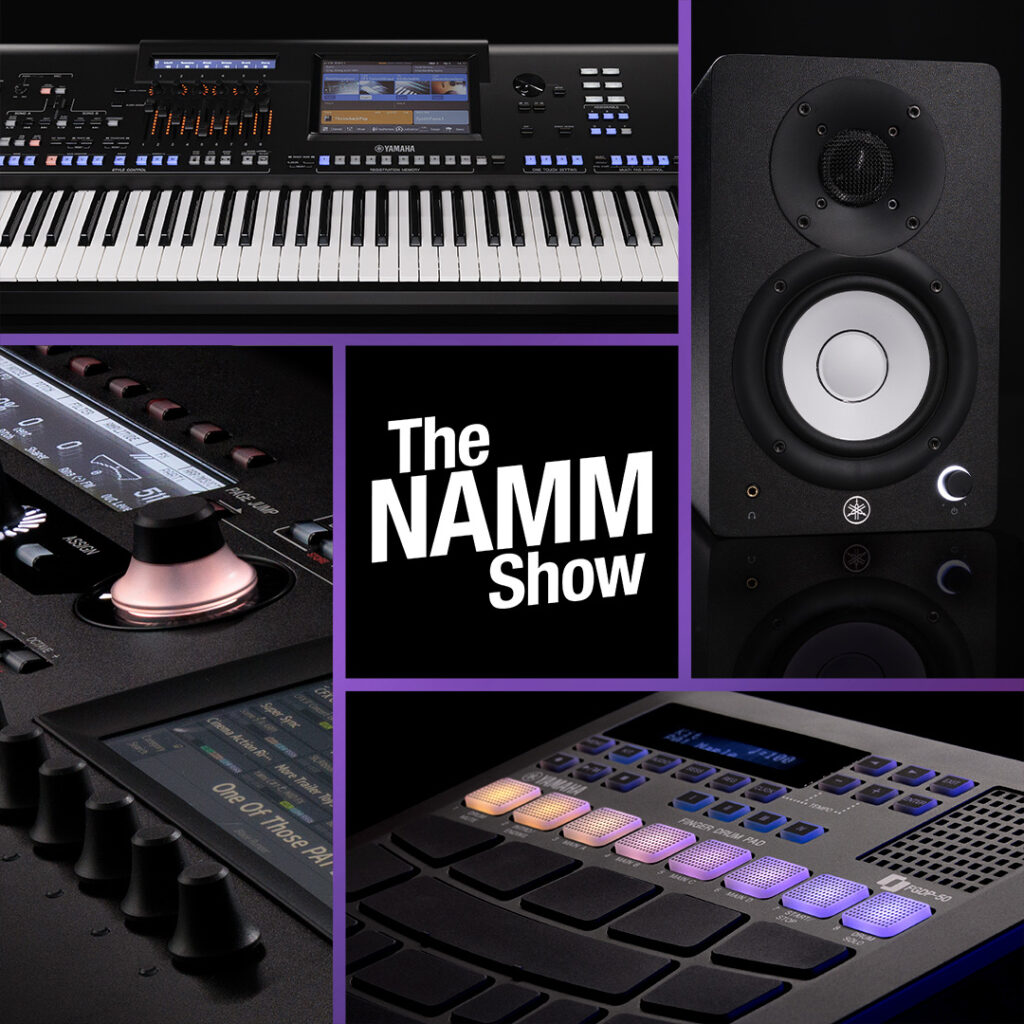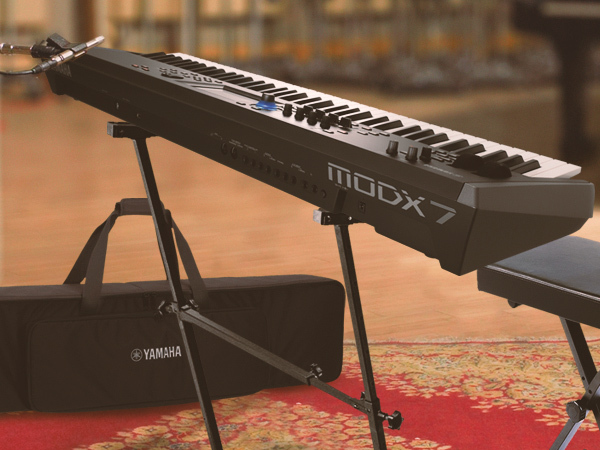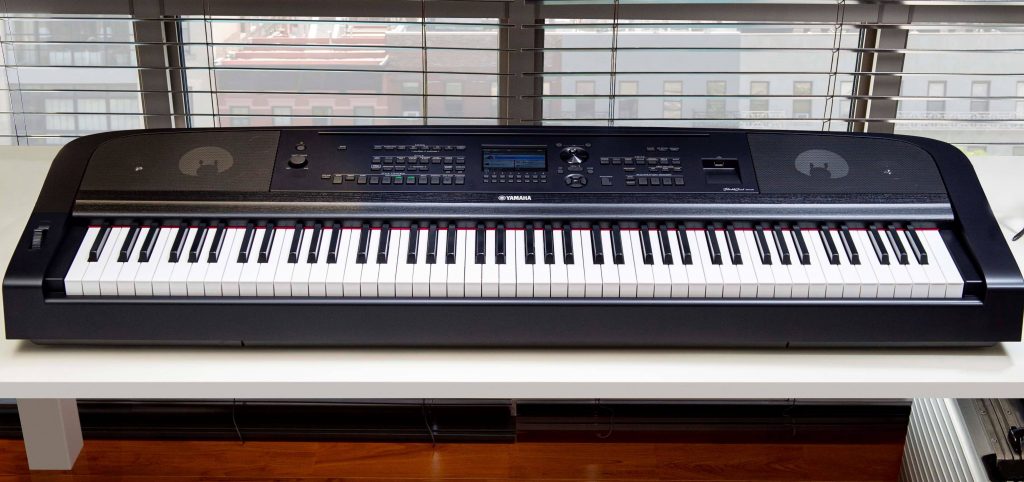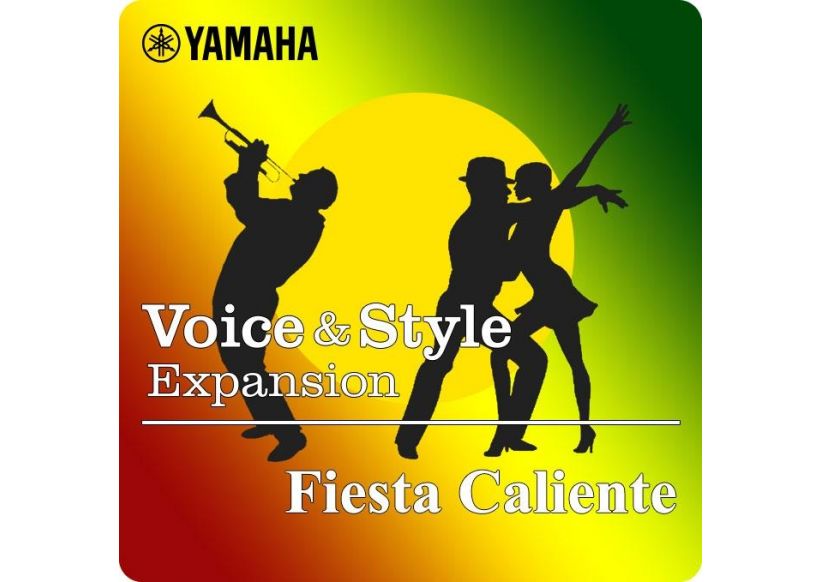Step Up to a Better Keyboard, Part 1: Feel and Sound
“Good enough” isn’t always good enough.
We all love a bargain. But there are times when you should consider not just how little you can spend, but how much you can get for your money. This is especially true when it comes to purchasing a musical instrument that can help you or your child enjoy learning and playing music for a lifetime.
In this two-part series, we’ll explore some of the reasons why “good enough” isn’t always good enough when it comes to buying a keyboard instrument.
Better Feel
Entry-level portable keyboards are a great starting point for every aspiring musician. Models like the newly introduced Yamaha PSR-E273 have 61 keys (enough to be able to play two-handed), built-in speakers and a headphone jack, plus plenty of sounds, drum rhythms and educational features that make it fun to learn and make music.
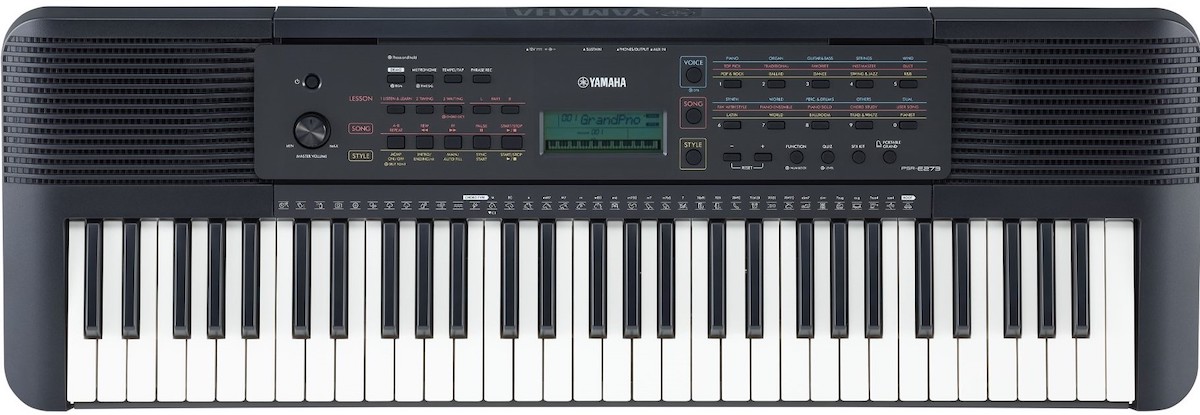
Because these instruments are designed for beginners, they’re easy to play. Maybe even too easy. That’s because they lack a “weighted” action: keys that provide enough mass, resistance and movement to enable the player to develop the technique, finger strength and muscle memory to be able to play a real piano.
The good news is that there are a number of digital pianos that provide this essential feature, and at an affordable price. For example, the Yamaha P-45, which has a full 88 keys, features a GHS (Graded Hammer Standard) action that replicates the weighting and natural feel of a piano — and, like a piano, it’s even a bit heavier on the lower notes and lighter on the higher ones (something called a graded action).

Other types of actions provide even more detailed touch and response. (You can learn more about various Yamaha actions here.) For example, the NWX (Natural Wood X) design adds more weight to the keys for a better touch response that helps to strengthen the fingers. It also adds a “damper” sensor to improve the response time for repeated notes, so the keyboard doesn’t feel sluggish. (For more information about the benefits of this third sensor, check out this video.)
The NWX action can be found in some top-of-the-line Yamaha digital pianos, including the portable P-515. But for the closest thing to an acoustic piano feel — without the maintenance and upkeep of a real piano — you might want to consider a Yamaha Clavinova. There are numerous models to choose from, but they are all housed in piano-like cabinets and come with full-length keys, all three standard piano foot pedals and a wealth of innovative features.
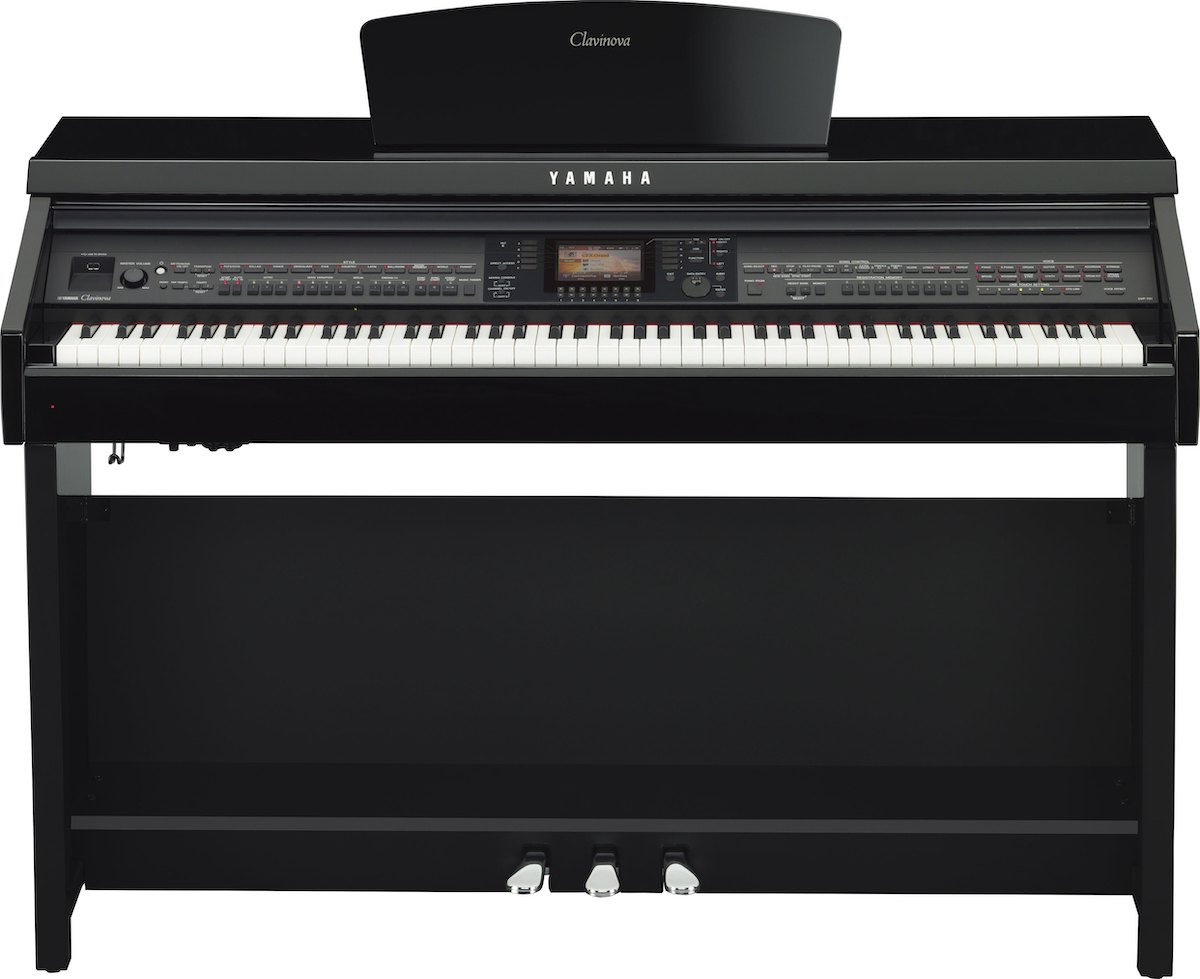
Clavinova CSP Series models utilize the GH3X action, along with wooden keys, while CLP Series and CVP Series models offer “Grand Touch” keyboards with full-length synthetic ivory and ebony keys. Grand Touch technology reproduces the kind of key resistance and natural return of the keys that is unique to a grand piano, resulting in a more responsive touch and a much more controlled, nuanced sound. Click here to learn more about its benefits.
Better Sound
While entry-level digital keyboards usually offer a variety of piano and other sounds, their sonic quality sometimes leaves something to be desired. The piano sounds in better digital instruments are generally much more realistic, since they have been “sampled” from real pianos, meaning that professional engineers make recordings of the notes and convert them into playable sounds that are triggered by the keys.
Of course, how good those recordings are, and which piano was recorded to make the samples are huge factors in their sound. Most Yamaha digital keyboards include samples of concert grand pianos costing well over a hundred thousand dollars — pretty impressive, especially when you consider that the instrument housing those samples costs a fraction of that. Some, like Yamaha Clavinova digital pianos and the P-515, even provide two or more world-class piano samples to choose from, giving you more sonic variety to choose from.
Other factors that contribute to sonic realism include how many notes are recorded (it’s not always all 88), how long those recordings are per note (a piano note takes a long time to decay, so the samples may sometimes be of only a small portion of the sound) and how many levels of touch are captured (the sound of a real piano changes as you play from soft to loud). In general, more of everything is better, but the tradeoff is that the added memory required to store and play back all the samples costs more money. That’s one reason why inexpensive portable keyboards rarely sound as good as more expensive ones, and why portable keyboards in general rarely sound as good as digital pianos.
In addition, digital pianos often add extra aspects to the sound. An example is the Yamaha Virtual Resonance Modeling (VRM) found in select Clavinova, ARIUS and AvantGrand models. This technological breakthrough recreates the natural reverberation and sympathetic vibrations that occurs inside a grand piano when the dampers are not touching the strings and a struck note causes other notes to ring gently — an important part of what makes a piano performance sound so warm and rich. Similarly, the “key-off” samples provided in some advanced digital keyboards (such as selected Clavinova models) deliver the slight change in sound that occurs when a damper falls back on the string after a key is released. They may be subtleties, but rest assured that you will hear the difference that technical innovations like these make to the sound of your instrument.
Last but not least, the speaker system built into a digital keyboard has an impact on sound quality. More power means you can get a rich, clear sound loud enough to feel like you are playing a real acoustic piano. In addition, larger speakers are better at reproducing the full range of tonalities, and sound good even at louder levels. As a comparison, the entry-level Yamaha P-45 comes with dual full-range 4.7″ round speakers, each powered by a 6-watt amplifier. That gives you pretty good sound, but when you step up to the Yamaha P-515, the two 4.7” x 2.4” oval speakers are not only powered by 15-watt amps, but they’re designed to handle just the lower-frequency bass sounds, since they’re supplemented by two additional 1″ inch tweeter speakers (powered by a separate 5-watt amp) to reproduce the higher frequencies. The end result is a more “hi-fi” sound, with a fuller-sounding bass and a crisper top end.

In Part 2, we take a look at other advanced features you can expect to find in “step-up” keyboards.











